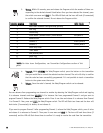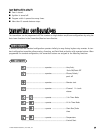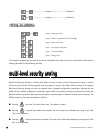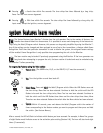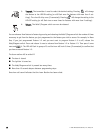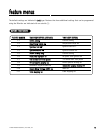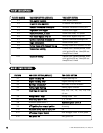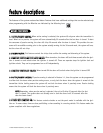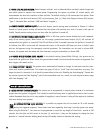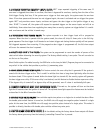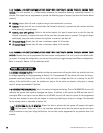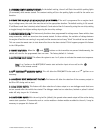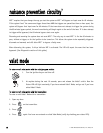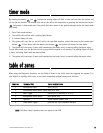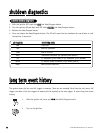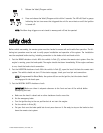
4444
© 2005 Directed Electronics, Inc. Vista, CA
11--77 DDOOOORR LLOOCCKK PPUULLSSEE DDUURRAATTIIOONN::
Some European vehicles, such as Mercedes-Benz and Audi, require longer lock
and unlock pulses to operate the vacuum pump. Programming the system to provide 3.5 second pulses, will
accommodate the door lock interface in these vehicles. The default setting is 0.8 second door lock pulses. Some
modification to the door lock harness (H2) is also necessary. (See
(+/-) Door Lock Outputs Harness (H4)
section,
"Type E - Mercedes-Benz and Audi -1985 and Newer" diagram.)
11--88 FFOORRCCEEDD PPAASSSSIIVVEE AARRMMIINNGG OONN//OOFFFF::
To use this feature, passive arming must be selected in Feature 1-1. When
turned on, forced passive arming will ensure that the system will passively arm, even if a zone is left open or
invalid. Forced passive arming occurs one hour after the ignition is turned off.
11--99 AAUUTTOOMMAATTIICC EENNGGIINNEE DDIISSAABBLLEE ((AAEEDD)) OONN//OOFFFF
: AED is a full-time, passive starter disable that works independ-
ently of the security system. When turned on, the orange, ground-when-armed output (H1/1) will activate 30
seconds after the ignition is turned off. The LED will flash at half its normal rate when the ignition is turned off
to indicate that AED is active and will interrupt the starter in 30 seconds. AED does not occur in Valet® mode
and can be bypassed using the emergency override procedure. The transmitter can be used to disarm AED,
however, the system must be armed and then disarmed, using the transmitter, to disarm AED.
11--1100 AARRMMEEDD WWHHIILLEE D
DRRIIVVIINNGG ((AAWWDD)) OONN//OOFFFF::
In the default setting (Armed While Driving), the system can be
armed with the ignition on. When armed, the ground-when-armed is not active and the sensors are bypassed. The
door triggers will remain active.
11--1111 CCOODDEE HHOOPPPPIINNGG™™ OONN//OOFFFF::
The system uses a mathematical formula to change its code each time the trans-
mitter and receiver communicate. This makes the group of bits or "word" from the transmitter very long. The
longer the word is, the easier it is to block its transmission to the unit. Disabling the Code Hopping™ feature lets
the receiver ignore the Code Hopping™ part of the transmitted word. As a result, the unit may have better range
with Code Hopping™ off.
22--11 SSIIRREENN OOUUTTPPUUTT CCOONNSSTTAANNTT//PPUULLSSEEDD::
The system can be programmed to output pulses instead of a continuous
output when the system is triggered. This is useful to honk the factory horn in applications where a siren is unde-
sirable. Remember that the unit is only capable of supplying 1 amp of current. A relay will be required to interface
with most factory horn systems.
22--22 SSIIRREENN DDU
URRAATTIIOONN 3300//6600 SSEECCOONNDDSS::
It is possible to program the unit to sound for 30 or 60 seconds
during the triggered sequence. Some states have laws regulating how long a security system can sound.
When using the Bitwriter™, the siren can be programmed to sound for any length of time from 1 second to 180
seconds. Use the right and left arrows or the plus (+) and minus (-) keys on the keyboard to change the siren
duration in 1 second intervals. Holding down the key will rapidly increase or decrease the setting.
mmeennuu ##22 -- aaddvvaanncceedd ffeeaattuurreess



